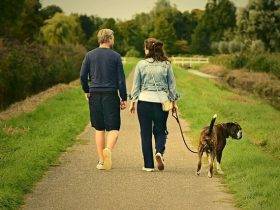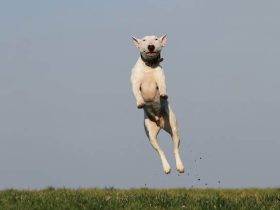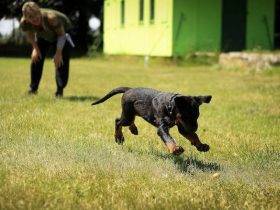Clever Canine Dog Training
training is more than just commands – it’s about building a strong relationship with your dog based on mutual understanding, respect, and trust. At Clever Canine Dog Training, holistic and rewards-based approach focuses on empowering both dogs and their owners to achieve their full potential.
What is Clever Canine Dog Training?
Clever Canine Dog Training was established in 2005 to provide balanced and effective training methods that are tailored to each dog and owner’s needs. Led by founder and head trainer Jane Doe, the trainers take a gentle, encouragement-based approach that celebrates a dog’s instincts and intelligence. Rather than dominating or punishing dogs, we believe training should be a fun, confidence-building experience for both parties.
Some key aspects of Clever Canine Dog Training philosophy include:
- Positive Reinforcement: They rely on reward-based training methods that associate good behaviors with praise, petting, and treats. This strengthens the bond between dog and owner through mutual trust and cooperation.
- Understanding Canine Communication: The trainers are well-versed in canine body language and communication styles. This allows us to interpret what dogs are trying to tell us and address any behavioral issues from the dog’s point of view.
- Prevention over Correction: They focus on proactively preventing unwanted behaviors through management, enrichment and obedience exercises rather than punishing mistakes after the fact. Dogs learn best when mistakes are minimal.
- Client Education: Training doesn’t end at facility. They empower owners with the knowledge and resources to continue their dog’s learning at home. Consistency between home and school is key to long-term success.
- Individualized Training Plans: One size does not fit all when it comes to dogs. Their trainers design custom plans to suit each dog’s unique personality, strengths, needs and living situation.
Using these principles, they aim to provide dogs with predictable structure while allowing their natural instincts and interests to shine through fun, enriching activities. Obedient and confident canine companions are the result!
What Services Does Clever Canine Offer?
Clever Canine handles a wide range of dog training needs including:
Basic Obedience: Sit, stay, come when called, leave it, loose leash walking and more. These foundation skills are crucial for all dogs.
Advanced Obedience: Tricks, competition obedience exercises, protective stances, off-leash control and complex behavioral chains.
Puppy Classes: Socialization, bite inhibition, house training, chew toy introduction and other key skills for young pups. Early socialization is key to ensuring they grow into well-adjusted adult dogs.
Problem Behavior Modification: Jumping, barking, leash reactivity, separation anxiety, aggression and other issues. They address underlying causes through desensitization and counter conditioning.
Board and Train: For owners who need intensive, full-time training over the course of 5 days to 2 weeks. Dogs reside at our facility for individualized training programs.
Private In-Home Sessions: They come to your home to address specific challenges in your dog’s real-world environment. Great for reactivity cases.
Online Training Courses: For clients who can’t make it to our facility but still want pro guidance. Videos, exercises and support are provided digitally.
Group Classes: most popular option for basic manners and socialization. Six-week sessions held weekly.
No matter your dog’s needs, our caring trainers have the experience and tailored approaches to help your pup become their best selves! They also provide ongoing support for life through follow-up sessions.
Understanding Canine Body Language
Being able to understand what your dog is trying to communicate is so important for avoiding misunderstandings and making sure training is conducted safely and positively. The trainers are experts in canine body language and teach owners the subtle cues all dogs display. Some of the most important signals to watch for include:
Tail Position – Wagging can mean many things for a dog, from friendliness to uncertainty to outright stress. An upright, puffed out tail often indicates confidence, whereas a tucked tail between the legs shows fear.
Ear Position – Forward and pricked ears generally mean a dog is alert and engaged. Back means uninterested or submissive. Flattened ears indicate wariness or possible aggression.
Eyebrows – Raised eyebrows with eyes averted or lowered indicate a dog feels insecure or threatened. Direct eye contact could mean confidence or intent to confrontation depending on other cues.
Mouth – Relaxed mouth is a sign of relaxation. Tightened lips or a wrinkled nose implies unease or warning. A hard stare combined with lips curled back over teeth is a definite threat signal.
Body Stance – An upright posture and forward reach indicates confidence. Low to the ground with shoulder hunching suggests fear or anxiety. A direct, stiff-legged stance is an imminent threat display.
Vocalizations – Panting is usually friendly stress or excitement. Growling implies a negative reaction where a dog feels challenged. Deep, loud barks are alert or alarm barks.
Being able to discern these signals is vital for ensuring you don’t miss when your dog feels stressed or uncomfortable. It helps trainers shape interactions positively and avoid unwanted conflicts. With practice, you too can become fluent in the language of dog!
Commands and Cues
At the core of any good obedience training program are clear, consistent cues that allow dogs to confidently exhibit desired behaviors and earn rewards. Here are some of the basic and advanced cues we teach at Clever Canine:
- Sit: A fundamental polite behavior. We pair the verbal cue “sit” with a hand signal of your palm facing out and moving slightly up.
- Down: To lay down smoothly from a sit, we use the verbal “down” and tap our palms down on the floor.
- Stand: For standing on two legs from a sit. The cue is “stand” with an upward hand signal.
- Come: The lifesaving recall cue “come” is paired with enthusiastic clicking or kissing sounds. It must always result in reward.
- Leave It/Drop It: For ignoring tempting objects. We vary inflection on “leave it” and use hand gestures to keep your dog’s focus.
- Stay: Great for patiently waiting in one place until released. We use “stay” and a flat palm for the cue.
- Heel: For polite leash walking on your left side. We initiate “heel” and reward close attention and position.
- Place/Mat: Teaches calm settling in designated spot. We point to mat and use happy “place!” cue.
And those are just the basics! More complex cues we teach include go to your bed, fetch specific toys, front/center, spin, jump and more. The goal is empowering dogs with clear ways to display good behavior and celebrate their successes.
Creating the Perfect Training Environment
Ensuring your training area is properly set up for success is key. Some tips for an optimal environment include:
- Choose a quiet, distraction-free room without busy traffic areas if possible. Dogs learn best in calm settings.
- Lay down a non-slip training mat or use a taped “place” marker on the floor. Consistency aids learning.
- Have a variety of high-value soft and chewy treats on hand to reward your pup frequently. Cut treats small for frequent tossing.
- Maintain a 6-foot leash for control and feedback during lessons. A well-fitted harness or collar prevents injury or stress.
- Position family/friends outside audible range, but still accessible for reassurance breaks. Minimize distractions.
- Keep secondary reinforcers like toys tucked away until lesson completion to maintain focus on you.
- End each session on a positive note while your pup is still engaged. Build an association with learning being fun!
With simple adjustments to your environment, you set your dog up for optimal engagement and build their excitement for training time. This lays the foundation for fast progress!
How to Continue Training at Home
While group classes give you expert guidance, the real progress happens reinforcing those good habits daily at home. Here are some tips for continuing your dog’s learning:
- Practice short 5-10 minute sessions, multiple times per day for young attention spans.
- Rotate between a variety of simple commands using your training cues. Keep it fun!
- Reward every correct response, even imperfect ones, with praise or treats. Consistency is key.
- Use everyday activities like leash walks, eating or playing as spontaneous training opportunities.
- Try new locations to challenge your pup and reinforce their lessons are universal.
- Keep training positive and cheerful in tone. End on a good note before your dog loses focus.
- Record sessions to track your dog’s progress. Consult your trainer if challenges arise.
- Enroll in follow up classes or private sessions to shore up weaknesses and advance skills.
Regular consistency is the true secret to success! A few minutes here and there establishes important daily habits and confidence for lifelong friendly companionship. With dedication, you’ll both reap benefits you sole desire





Leave a Reply